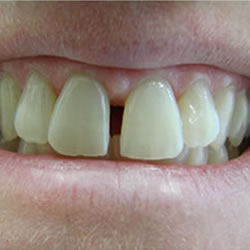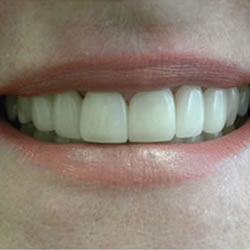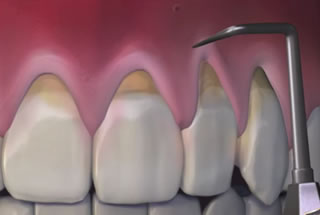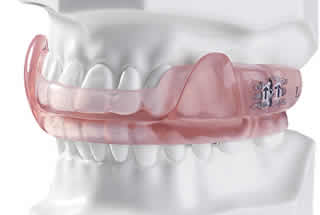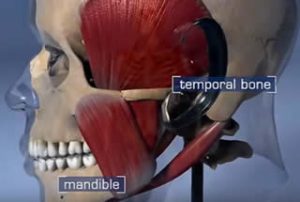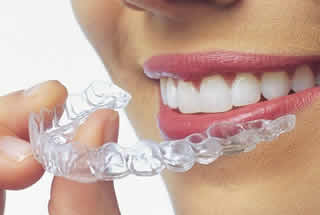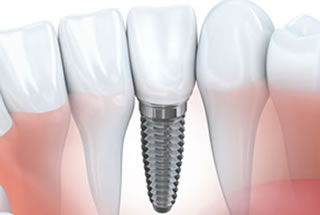If your tooth experiences severe trauma or deep decay, you may need more than a regular filling. Inlays, onlays, and crowns can stabilize a damaged tooth and restore its integrity. Typically, it takes two appointments to receive your custom restoration. Thanks to CEREC technology, patients can have their inlays, onlays, and crowns created and place in one appointment.
What is CEREC?
A type of CAD/CAM machine that mills restorations from ceramic materials, CEREC stands for Chairside Economical Restoration of Esthetic Ceramics. This system uses 3-D imaging to generate an image of the damaged tooth and produce a design for the restoration. Your dentist will input specific details and then program the unit to mill your new inlay, onlay, or crown.
How long does it take for the CEREC restoration?
The actual length of time for your appointment depends on the number of restorations you need, but the average is about 1.5 hours.
Will my CEREC restorations look good?
By choosing an experienced, talented dentist, you can ensure that your CEREC inlay, onlay, or crown is a high-quality, attractive restoration.
Why should I consider CEREC?
The biggest advantage to the CEREC restorations is that you can save the extra time and additional costs associated with traditional dental repairs. With CEREC, you won’t need a second appointment, and the laboratory charges are usually decreased because the restoration is created in your dentist’s office, not in an outside facility.
Dr. Yolanda Cruz dentistry – CEREC– Toronto Canada Dentist
Many people suffer from TMJ disorder, and don’t realize that there is treatment available. Often, identified by a variety of unpleasant symptoms such as headaches, neck pain, clicking or popping in the jaw, and ringing in your ears, TMJ can make your life difficult. With treatment for this condition, you can enjoy a comfortable, healthy smile.
What is TMJ?
The temporomandibular joints, or TMJ, are the small, triangular joints that control the opening and closing of your jaw. Stress, fatigue, or injury can disrupt the delicate balance of these joints, causing misalignment. If your jaw joints don’t work properly, the associated muscles and nerves become strained, creating pain and irritation.
Treating TMJ
To determine the cause of your discomfort, the dentist or orthodontist will perform a complete assessment of your whole mouth to decide the best treatment. Non-surgical TMJ therapy could include lifestyle modifications to reduce stress, exercises to strengthen affected muscles, and an oral appliance to prevent clenching and grinding. Restoring balance will ease your pain and enhance your quality of life.
You can also remember these tips:
Practice Relaxing
Many people grind their teeth when they are stressed. Making a conscious choice to relax your jaw will help prevent soreness and tooth damage.
Go Easy
If you are experiencing TMJ symptoms, choose soft foods. Avoid crunchy, hard choices and don’t chew gum.
Hot and Cold
For the maximum benefit, alternate hot and cold packs about every 15 minutes.
Watch Your Yawns
Big, deep yawns can aggravate TMJ symptoms, so support your chin with your fist to keep your jaw from straining.
Dr. Yolanda Cruz dentistry – TMJ Treatment– Toronto Canada Dentist
Millions of people avoid dental visits because of fear. Without proper care, you can damage your smile and oral health. If anxiety has kept your from enjoying, a vibrant, healthy smile, sedation dentistry can help.
Because many providers understand that some people develop anxiety about seeing the dentist, they usually do everything possible to make the experience restful and pleasant. Detailed explanations, thorough answers to questions, and treatment with a gentle touch can reduce stress. Some patients need additional measures to minimize their anxiety, so consider the various types of sedation:
Laughing Gas
Also referred to as nitrous oxide, laughing gas produces feelings of warmth and calm. Laughing gas is breathed in through a mask that rests over the nose. Once the dentist turns off the gas, any side effects dissipate right away.
Oral Sedation
With oral sedation, patients take a dose of anti-anxiety medication about an hour before the procedure. A friend or relative will need to accompany you to and from the office. During treatment, you will enter a peaceful state that allows you to respond to any requests but remember little about the appointment when you leave. The affects of the oral sedation may linger for several hours, but most people resume normal activities within 24 hours.
Dr. Yolanda Cruz dentistry – Sedation Dentistry – Toronto Canada Dentist
Achieving a gorgeous smile can boost confidence and contribute to your success, both personally and professionally. The aging process, lifestyle choices, and dark foods or beverages can stain teeth and leave them looking less than desirable. Many people use teeth whitening to remove discolorations and brighten their smiles. Before your start the process, consider these tips:
• Make a dental appointment first
Even if you decide to whiten with over-the-counter products, visit your dentist for a checkup and professional cleaning. This exam will ensure that your oral health is in good shape and allow you to ask for your dentist’s input before you start the whitening process.
• Do your homework
Usually, at-home bleaching products contain often solutions that are 10 to 20 percent peroxide. Begin with the mid-level option. If you don’t attain the optimal results, select a product with higher levels of bleaching agent or consider professional teeth whitening instead.
• Carefully follow the instructions
More isn’t always better, and leaving the product on your teeth longer than recommended can irritate or inflame gums, so don’t deviate from what the directions say.
• Watch for sensitivity
Some people develop sensitive teeth when they use teeth bleaching products. Generally, this sensation goes away after you stop whitening. Talk with your dentist if the problem lingers.
• Don’t overdue it
Though you may need to touch up your smile with periodic whitening, some people get carried away. Once a month should be enough to keep your teeth looking fabulous.
• Let the experts do it
The quickest, safest, most effective way of whitening your teeth is to let the dental experts do it for you. And sometimes, your dentist may be offering in-office whitening specials or promotions
Yolanda Cruz dentistry – Teeth Whitening – Toronto Canada Dentist
the past, dentistry usually involved waiting for cavities to develop and then drilling the decay so that the area could be filled. Over time, that filling might wear down, which could lead to the need for a crown. Although this system did repair damage to teeth, it did little to prevent damage and decay before they occur.
Minimally invasive dentistry not only focuses on disease prevention, but it also encourages patients to achieve optimal oral health. Research has linked dental health to overall wellbeing, so having a strong, healthy smile can have an impact on your whole body wellness. Most dentists now focus on educating patients on the importance of protecting their teeth and gums.
Modern advances allow your dentist to analyze your risk for issue like gum disease and tooth decay before the problems actually develop. If the dentist sees signs of potential trouble, your dentist can recommend steps that will help get your oral health back on track. For example, if you have swollen or bleeding gums, these symptoms can indicate the early stages of gum disease. Thorough brushing, regular flossing, and special rinses can help curb the problem before it gets out of hand.
When issues do arise, minimally invasive dentistry also attempts to use the most conservative option available to correct the problem. While repairing decay, for instance, your dentist would likely choose a composite filling as opposed to a metal amalgam because all-white fillings require less removal of healthy tooth structure. As well, they don’t crack or leak over time, which can create the need for further repairs.
Dr. Yolanda Cruz dentistry – Minimally Invasive Dentistry – Toronto Canada Dentist
The earliest stage of gum disease, gingivitis is an inflammation of the tissues surrounding teeth. Because gingivitis is often painless, many people don’t realize they have a problem. Without treatment, gingivitis can progress to periodontitis, a more severe form of gum disease that leads to bone degeneration and tooth loss if it isn’t stopped.
What are the signs of gingivitis?
Usually, the initial symptoms are mild. Swollen, red gums and bleeding when you brush are common indicators that you may need to talk to your dentist about a periodontal evaluation.
Are there any risk factors for gingivitis?
This condition is very common and almost anyone can develop gingivitis. You may have an increased risk for gingivitis because of poor oral health, tobacco use, older age, certain medications, hormonal changes, dry mouth, and substance abuse.
What causes gingivitis?
One of the primary contributors to gingivitis is plaque, the sticky, colorless film that regularly forms on teeth. As the plaque builds up, it irritates the gums and can cause damage. If plaque remains on teeth for more than a couple days, it will harden into tartar, which can only be removed by your dentist or hygienist.
How do I prevent gingivitis?
Good oral hygiene is a key part of keeping gums healthy. Remember to:
• Brush at least twice a day to remove plaque
• Floss regularly to get between teeth
• Have teeth professionally cleaned to remove tartar
• Schedule twice yearly checkups
• Use a prescription rinse to improve gum health
We care about your oral health at Dr. Yolanda Cruz dentistry – Toronto Canada Dentist

 E-Mail Us
E-Mail Us  416-595-5490
416-595-5490